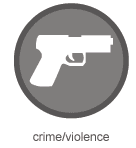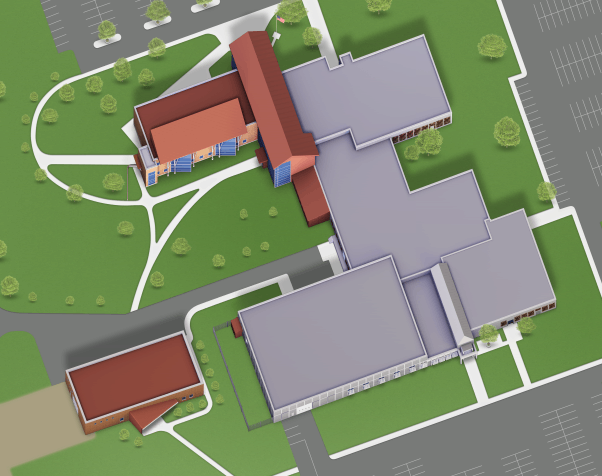 Violence
Violence
Active Shooter, Hostage, Terrorism
IMMEDIATE EMERGENCY ACTIONS
If you see a person acting suspiciously, someone violently threatening/injuring someone or a person with a weapon…
- Remain calm to avoid provoking disruptive individual(s).
- Do not physically confront the person and do not block the person’s access to an exit.
- Do not let anyone into a locked building/office.
- Keep away from the area and alert others to the danger.
- Call 911 or the Campus Crisis Response Team by dialing 9999 on any campus phone.
- Provide as much information as possible about the person and his or her direction of travel.
- Maintain a safe distance from the suspect until emergency personnel arrive. Do not attempt to subdue the individual; avoid direct eye contact
- Follow instructions of emergency personnel.
- If told to seek safe shelter, get inside immediately and lock doors.
Active Shooter – Run, Hide, Fight
An active shooter is a person actively engaged in killing or attempting to kill people in a confined and populated area. Although the likelihood of an active shooter event occurring at Great Falls College MSU is extremely low, it is important that members of the Great Falls College MSU community understand how to respond should they find themselves in such a situation. Below is guidance regarding what to do during an active shooter event as well as what to expect when law enforcement arrives on scene.
DISCLAIMER: An individual must use his/her own discretion during an active shooter event as to whether he/she chooses to run to safety or remain in place. However, best practices for surviving an active shooter event are listed below.
REMEMBER: Law Enforcement’s first priority is to confront and disable the threat.
Develop a Survival Mindset
- Awareness and Preparation: Take time to understand your surroundings and environment before an emergency occurs.
Ask yourself, “What if?” questions and develop a plan.
In an Active Shooter Emergency
Make a decision, trusting your instincts, to take action to protect yourself to survive the situation. You generally will have three options:
- Run: Can you safely escape?
- Hide: Is there a good place to hide?
- Fight: Will you defend yourself against the shooter?
(Immediate Vicinity) Be aware of your surroundings and immediately take action.
Three words to remember are RUN, HIDE, FIGHT.
If outside:
- RUN off campus in a zigzag pattern
- Seek cover
- Prevent others from entering the danger zone
If inside and cannot escape:
- Get inside a room and HIDE.
- Secure the door (lock, barricade, wedge, straps, etc.)
- Cover windows and turn off lights
- Stay on floor behind an interior barricade, offset from the door or HIDE the best that you can
- Silence cell phones and pagers and remain quiet
- Call 9-1-1 if you know the location, description or identity of the shooter(s). If you cannot speak, leave the line open and allow the dispatcher to listen.
- Remain calm and prepare for an evacuation.
- As a last resort, and only when your life is in imminent danger, attempt to disrupt and/or incapacitate the active shooter by throwing objects and using improvised weapons and FIGHT.
When Law Enforcement Arrives
- When law enforcement reaches you, do not run at them or make sudden movements.
- Law enforcement’s primary objective is to stop the active shooter as soon as possible.
- Responding officers will not necessarily know the identity of the shooter and may
treat everyone they encounter as a possible suspect.
- Do not scream, yell, point, or wave your arms.
- Do not hold anything in your hands that could be mistaken for a weapon (including cell phones).
- Show the officers your empty hands and follow their instructions.
- Remain calm and follow the instructions of the responding officers.
- The first officers to arrive at the scene will not stop to help injured persons.
- Their task is to proceed immediately to the shooter/threat.
- Once the threat has been neutralized, safety corridors will be established and the building will be evacuated.
Information to Provide to Law Enforcement or 911 Operators
- Building name and address
- Location of the active shooter(s)
- Number of shooters
- Physical description of shooter(s) (weight, height, race, gender, clothing color and style, etc.)
- Number and type of weapons held by the shooter(s) (handgun, rifle, shotgun, explosives)
- Number of potential victims at the location
For More Information on Violent Acts, Threats and Preparedness

 Welcome to Great Falls College MSU
Welcome to Great Falls College MSU

